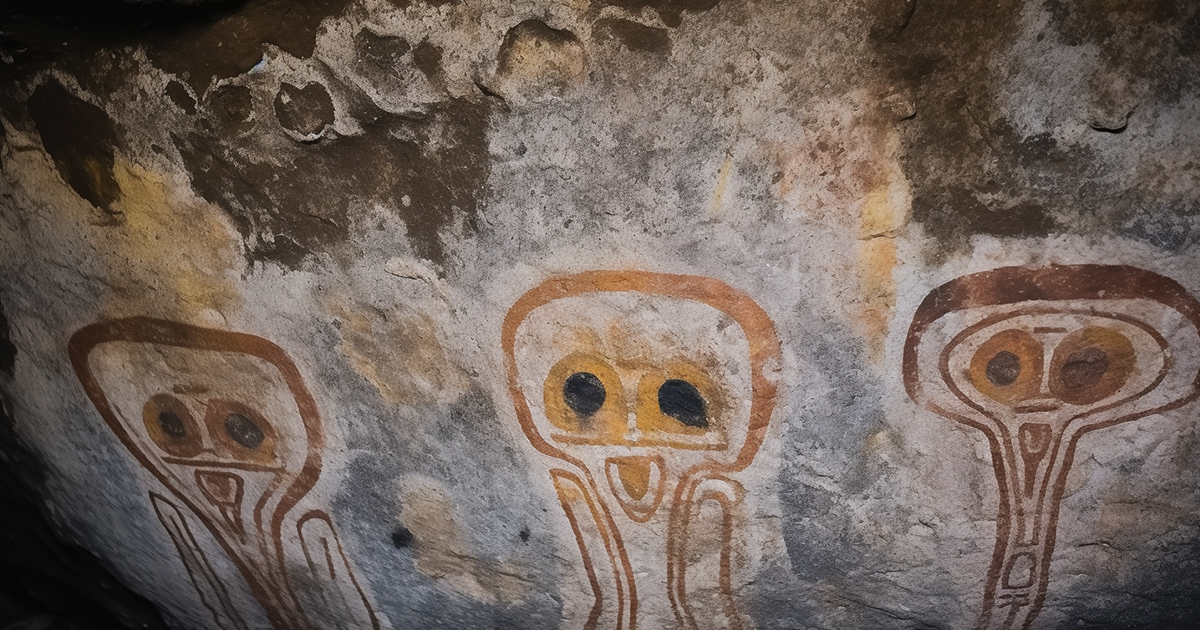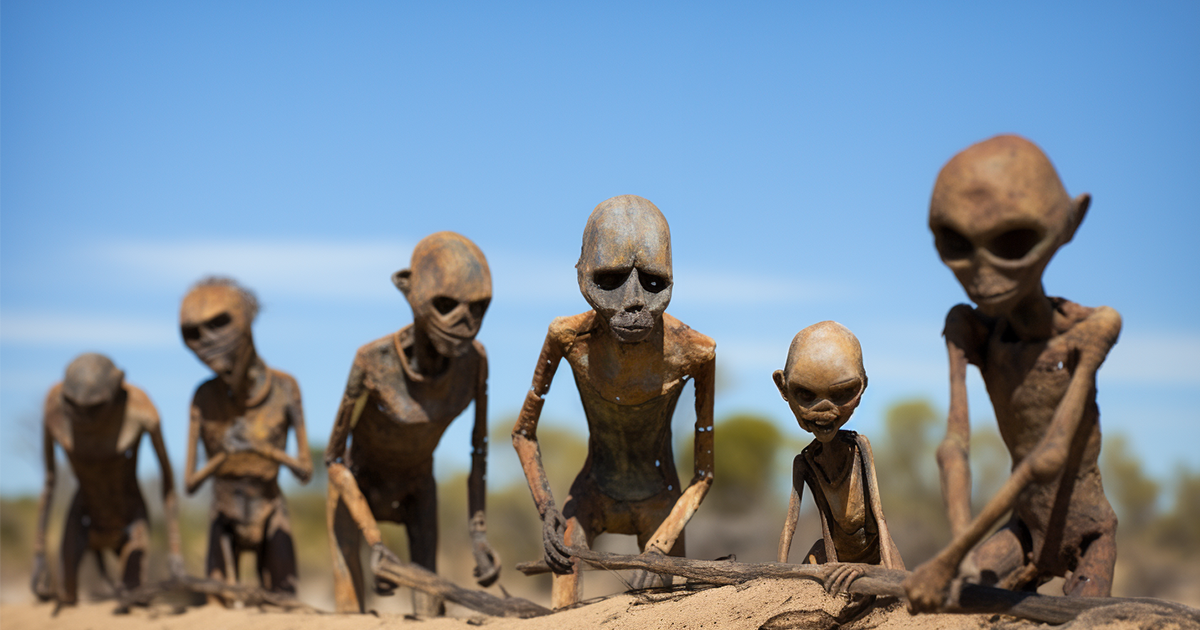Discovering the Secrets of Ancient Petroglyphs: A Voyage into the Enigmatic Realms of Mystical Art
Embarking on the quest to unravel historical enigmas leads us on a mesmerizing journey through the captivating domain of ancient petroglyphs. These mesmerizing carvings and paintings etched on rocky surfaces from centuries ago continue to be a perpetual source of wonder and curiosity for scholars, sparking a multitude of hypotheses and speculations regarding their origins and significance.
Embarking on an exploration of these petroglyphs, scattered across the globe, we now turn our attention to three extraordinary instances that hint at a potential link between ancient civilizations and realms beyond our comprehension.
The Enigma of Northwestern Australia: The Enigmatic Wangina Figures
Nestled within the rugged Kimberly desert in Northwestern Australia, caverns adorned with mysterious figures, known as the Wangina, stir intrigue. These figures, with their prominent white faces, subtle mouths, and piercing black eyes, captivate those delving into the mysteries of ancient art.
The Wangina figures hold a special significance for the Aboriginal people of Australia, interwoven with their creation myths and cultural narratives. Legends depict the Wangina as revered figures and celestial beings shaping the essence of their homeland.

These tales of beings ascending to the heavens and returning imbued with wisdom are not merely oral traditions but vividly depicted in elaborate cave artworks, forging a tangible connection to ancient customs.
The striking resemblance between the Wangina figures and the typical depiction of gray aliens poses a compelling question: Could these petroglyphs serve as authentic testimonies of extraterrestrial encounters witnessed by the Indigenous peoples of Australia?
The Puzzling Ensemble of Eastern Utah: The Family Panel at Nine Mile Canyon
Amidst the crimson sandstone cliffs bordering Utah’s Nine Mile Canyon, celebrated as Earth’s lengthiest art gallery, lies an extensive array of over ten thousand petroglyphs.
Among depictions of hunts and indigenous wildlife, one panel stands out for its otherworldly aura – the Family Panel. This panel showcases luminous humanoid figures adorned in what seems to be futuristic attire, complete with helmets and antennas.
According to the enduring beliefs of the Navajo, Fremont, and Ute tribes who have inhabited this region for generations, these petroglyphs are ancient relics dating back millennia. They interpret these images as proof of visitors from distant worlds who once graced Earth, possibly sharing knowledge and enlightenment.
The intriguing aspect lies in the remarkable similarity between these beings and spacemen, prompting reflection on the inspiration behind these unconventional depictions. Do these representations depict extraterrestrial entities descending from the cosmos to guide and aid the native inhabitants, echoing the lore of Native American traditions?
Decoding the Mysterious Ghost Panel of Horseshoe Canyon, Utah
Tucked within Horseshoe Canyon, a part of Utah’s vast Canyonlands National Park, lies the Ghost Panel – a cluster of petroglyphs as captivating as they are perplexing.
Among the intricate motifs and figures embellishing the canyon walls, attention is drawn to towering humanoid entities clad in peculiar attire resembling spacesuits, complete with robes and helmets. These figures starkly contrast with the usual motifs found in prehistoric art.
Of particular interest is the portrayal of the central figure, known as the Holy Ghost. The depiction of dual frontal eyes and a side profile of the head presents a unique motif not commonly seen in other ancient artistic forms.
This unique feature has spurred theories among researchers, positing that the Ghost Panel symbolizes a momentous event from antiquity. Archaeologists estimate that these petroglyphs date back an astonishing ten thousand years, adding layers of perplexity.
The Navajo people, descendants of the ancient creators of these petroglyphs, trace their lineage to the Holy People. According to their oral traditions, these entities played a pivotal role in guiding them post a catastrophic event – a narrative aligning with the ancient astronaut hypothesis, suggesting that extraterrestrial beings visited Earth to impart wisdom.
Insights via Video Observations:
Concluding Reflections
Essentially, these three arrays of petroglyphs transcend the ordinary; they endure as symbolic representations of the profound bond between humanity and the mystical dimensions of the cosmos. While the veil veiling the mysteries of these ancient depictions may never completely lift, they stand as poignant reflections of the intricate tapestry of human history and our ceaseless inquisitiveness about the uncharted frontiers beyond our familiar realm.
Etched into the core of our planet, these petroglyphs continue to evoke wonder and contemplation, serving as testaments that the past mirrors the vast and mystifying infinity of the universe itself.
